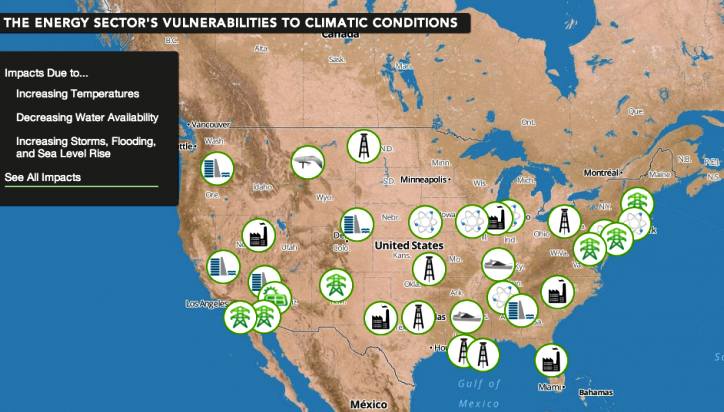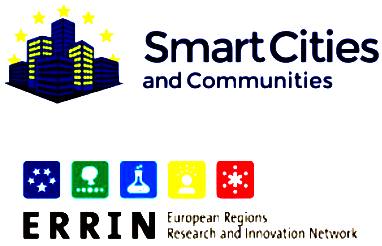|
US DEPARTMENT OF ENERGY - Better Buildings
|
|
|
An example of gross un-sustainability. A city cannot generate its own energy from nature. It relies on electricity supply from utilities miles away from the source. There is no way that such a condensed layout could capture heat energy such as to be self sufficient. Cities are also choked with fumes from IC engines, so breeding grounds for disease. Why then do we have cities?
US ENERGY STRATEGY FOR CHANGE
Addressing the effects of climate change is a top priority of the Energy Department. As global temperature rise, wildfires, drought and high electricity demand put stress on the nation’s energy infrastructure. And severe weather -- the leading cause of power outages and fuel supply disruption in the United States - is projected to worsen, with eight of the 10 most destructive hurricanes of all time having happened in the last 10 years.
To fight climate change, the Energy Department supports research and innovation that makes fossil energy technologies cleaner and less harmful to the people and the environment. We’re taking responsible steps to cut carbon pollution, develop domestic renewable energy production and win the global race for clean energy innovation. We’re also working to dramatically increase the efficiency of appliances, homes, businesses and vehicles -- all in support of the President’s Climate Action Plan.
As President Obama said in his speech last month, climate change is happening - and the effects are already being felt across the country. 2012 was the hottest year on record; the worst drought in generations covered more than half the country; record wildfires swept across western states; and an intensified Superstorm Sandy devastated communities in the East. (See The President's Plan to Fight Climate Change for more information.)
Today’s report U.S. Energy Sector Vulnerabilities to Climate Change and Extreme Weather examines current and potential future impacts of these climate trends on the U.S. energy sector. Researchers have identified several critical issues, including power-plant disruptions due to drought and the disruption of fuel supplies during severe storms. They’ve also pinpointed potential opportunities that would make our energy infrastructure more resilient to these risks.
The map above shows how the following three extreme climate trends have caused major issues to the energy sector across the country over the past ten years:
1. Increasing air and water temperatures;
2. Decreasing water availability across regions and seasons; and
3. Increasing intensity and frequency of storm events, flooding and sea level rise.
Here are some more details from the report:
* Climate change has created an increased risk of shutdowns at coal, natural gas and nuclear power plants. Why? Changes in the climate mean decreased water availability - which affects cooling at thermoelectric power plants, a requirement for operation.
* There are also higher risks to energy infrastructure located along the coasts thanks to sea level rise, the increasing intensity of storms, and higher storm surge and flooding.
* Power lines, transformers and electricity distribution systems face increasing risks of physical damage from the hurricanes, storms and wildfires that are growing more frequent and intense.
* Air conditioning costs will rise due to increasing temperatures and heat waves, along with the risks of blackouts and brownouts in regions throughout the country.
As climate change makes the weather more extreme, we have a moral obligation to prepare the country for its effects. Look to energy.gov for more about our plans to fight climate change.
HORIZON 2020 = BETTER FUNDING and BROADER SCOPE
We hope that the Horizon 2020 calls will fair any better. The ERRIN Network, in collaboration with the Smart Cities Stakeholder Platform, will organize an information session and a brokerage event on the Horizon 2020 call for Smart Cities and Communities on the 13th of December 2013. This is essentially the same criteria as the TSB call for 'Buildings Better Connected.'
The EC Smart Cities Stakeholder Platform (http://eu-smartcities.eu/) has the dual aim of identifying and spreading relevant information of technology solutions and needs required by practitioners and providing information for policy support to the High Level Group and the European Commission. It is both a web-based and physical Platform open to anyone who registers on it. Backbone is the contributions by stakeholders in a bottom-up way, owned by the stakeholders. The Platform is one of the two governance bodies of the Smart Cities and Communities European Innovation Partnership (EIP).
The event will target a wide spectrum of companies, universities and researchers from Europe and beyond and will foster the creation of consortia for the upcoming Horizon 2020 Energy calls on the 3 Focus areas:
UK - A nicely integrated solar home - as far as we know the 1st proposed. Zero carbon living that is affordable - provided that sensibly priced land is rolled out to keep houses below the £50,000 target. The US department of energy are also on the case.
General guidance for applicants Specific guidance for applicants Collaboration Nation - Buildings better connected - November 2013 Collaboration Nation - Buildings better connected delegate list Buildings better connected presentation Localised energy systems presentation https://www.innovateuk.org/-/buildings-better-connected http://energy.gov/science-innovation/climate-change https://www4.eere.energy.gov/challenge/ Smart-cities-and-communities-brokerage-event-h2020-call
A
group of Eastbourne residents fed up with the impossibility of attaining
a home in the United Kingdom while a low wage earner, have formed a
Society to investigate the possibility of building houses that are
affordable and sustainable at the same time. The academics have had
their chance and failed to kick start any project as advanced as this.
The TSB also failed to grasp the planning issues and the need for some
organisation to set a case precedent. The financial risks involved were
far too high, but a consultant strategist has agreed to work on this
project on a no-win, no-fee basis.
|
|
|
This website is Copyright © 2014. All rights reserved. All other trademarks are hereby acknowledged. Contact Us www.cherrymortgages.com |





